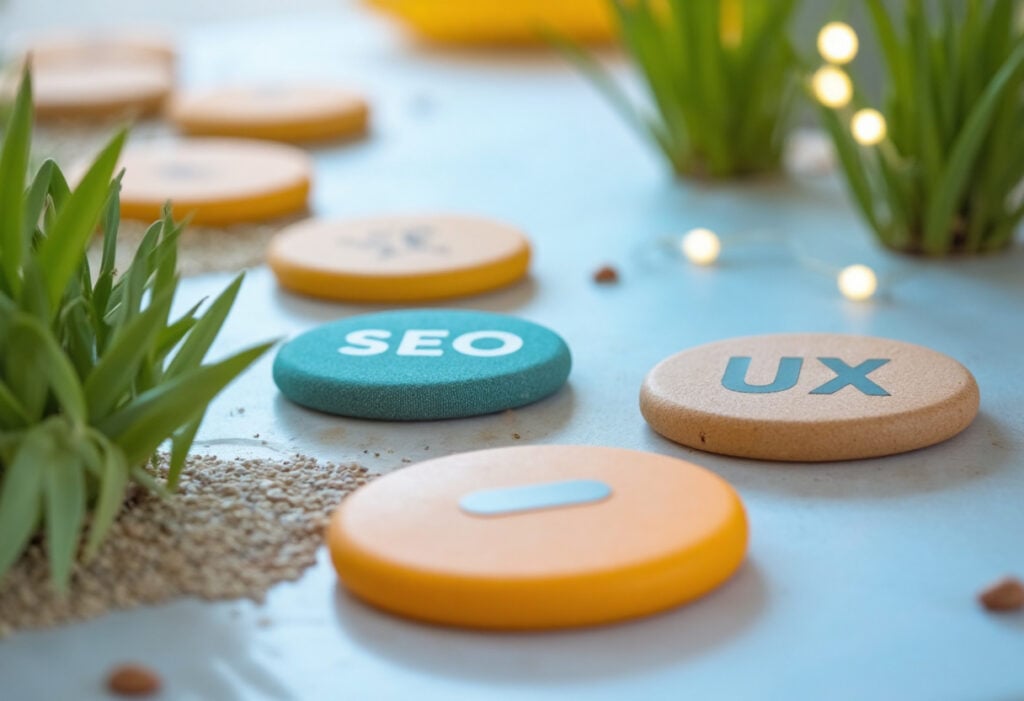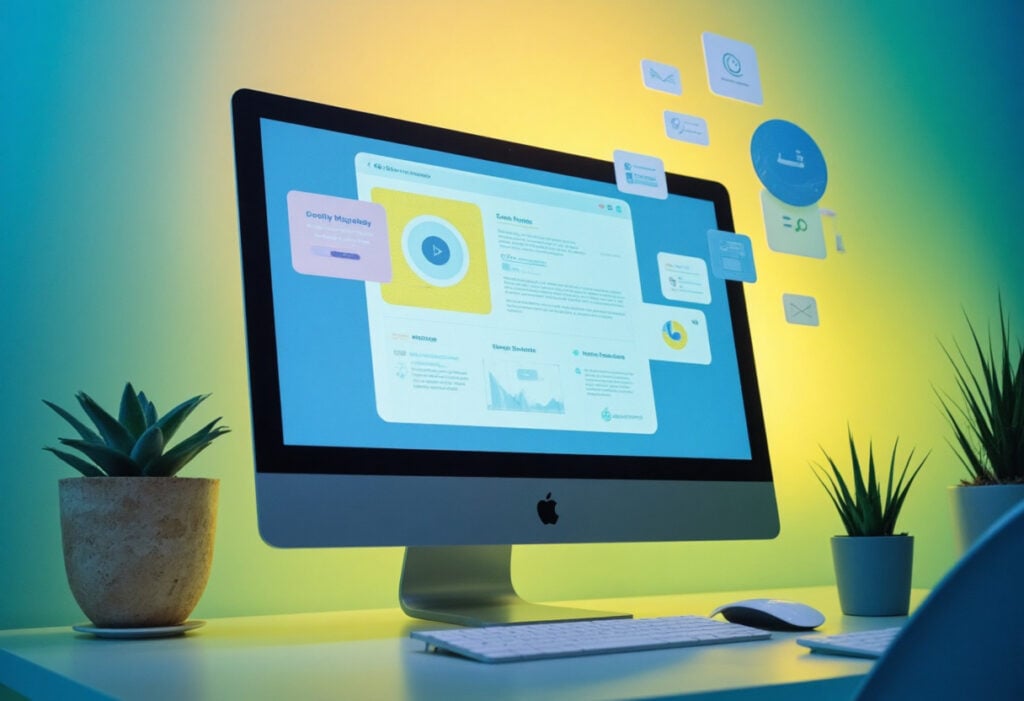Website design is an area that’s creative and constantly evolving, bringing new and interesting ways to showcase a business online. In 2011, parallax scrolling was an emerging design trend, but by 2021, it’s become a well-established and popular way to enhance the visual impact of a website. Here’s some insight into how the parallax scrolling effect works and some stand-out examples of this visually engaging graphic design technique.
What is the Parallax Scrolling Effect?
This is when the website background images move at a slower pace than the foreground images as you scroll down a webpage, creating a 3D visual illusion for the viewer. Here’s how it works.
Our visual perception shows objects close to us as moving faster and being larger than nearby objects, regardless of their actual size and speed. For example, when you’re driving in a car, sign poles and electrical poles zip past us quickly, while distant objects such as trees or mountains on the horizon move past very slowly, even though our speed is consistent. This is known as motion parallax, or the parallax effect. By recreating that effect in a website design on vertical or horizontal scrolling, our brains see the website as being in 3D, creating very realistic illusion of depth that enhances the user experience through the visual appeal of the site.
Although it’s quite new in the world of web design, the use of this illusion to create a sense of depth goes back several decades to early Disney cartoons like Snow White and the Seven Dwarfs and even Sonic the Hedgehog and Super Mario video games!
How is the Parallax Scrolling Effect Used in Website Design?
There are several methods for applying this graphic design technique to a website using a visual editor.
- Layering – By using multiple layers of background and foreground content, web designers can set individual speeds for each layer’s movement. Layers can also move in different directions to create vertical parallax or horizontal parallax. This is the oldest and simplest method for achieving this effect.
- Slide switching parallax – This is a good alternative to traditional website sliders and uses just two images layered over each other on the slider to create the effect of visual depth. This 3D parallax slider effect is also a good option for websites that have nothing but a slider and where you don’t want to have a full scrolling parallax effect.
- Repeated pattern manipulation – In this method, multiple screens or tiles are floated over repeated background images, creating the layered effect.
- Sprite – This method combines multiple slightly different images to create one single layer to create a 3D illusion. Depending on the position of the viewer determined by cursor movements, only one part of the image is displayed, and this changes as the viewer scrolls or moves through the website.
- Raster – This method works with the pixels of the image, refreshing them from top to bottom as the viewer scrolls through the website. The slight delay and pixel changes create the 3D effect.
Why Use the Parallax Effect on Your Website?
While this technical side is interesting, it’s all about the end result it has on the viewer. Using the parallax effect is a great choice if you:
- Want significant visual impact – It’s a great way to deliver visual impact, and immediately engages the brain by engaging its visual bandwidth.
- Want high engagement levels – It’s a design that is highly stimulating, fun and easy to gamify, turning a website into a great user experience. It’s a great choice for brands that want to tell a story with their website, letting visitors walk through and engage with multiple storylines about your brand or vision.
- Want visitors to spend more time on your website – Because it encourages people to explore and it’s easy to introduce an immersive and interactive experience, visitors tend to spend more time on websites that embrace this effect.
The Right Way to Use the Parallax Effect
As with any graphic design technique, it needs to be applied correctly to achieve the full effect. When it goes wrong, the parallax effect can cause load time delays, mobile browsing issues, and jarring contrasts that are too busy for the eye to follow. To get it right, we recommend that:
- You save the larger parallax effect for background content and peripheral images so that they balance the text and static content you want your visitors to see rather than becoming overwhelming.
- It is used on single-page websites where a brand has a limited number of products or a single message to share. It can also be used on multipage websites if limited to the home page or used minimally on additional pages.
- The website is thoroughly tested to ensure load speeds are within recommended benchmarks and that it is fully accessible on mobile.
8 Outstanding Parallax Scrolling Website Examples
1. Nolan Omura
As a Hawaii-based videographer and photographer, Nolan Omura’s website takes you on an immersive journey into the oceans and landscapes of this tropical paradise. By using the parallax effect, the visitor feels drawn into his video and photography, with soft animations and layering making you feel like you’re moving through the ocean’s depth.
2. Dining Chair
When you see a beautifully crafted piece of furniture, there’s an almost irresistible urge to run your hands over it and feel the luxury through your fingertips. This website, which showcases hand-crafted English and Italian furnishings is designed to tap into that desire, with showpieces and text floating up to engage your eye as you scroll through their bespoke offering.
This website takes you on a journey of discovery into the rich history of single malt Scotch whiskey. By using the parallax effect combined with beautiful imagery and text, this website inspires you by recreating the feeling and ambience of the Scottish islands, the craftsmanship of a true distillery, and the heritage that comes with every sip. Even if you’re not a Scotch drinker, you’ll be tempted to give it a try!
4. Firewatch
With its inherent gamification characteristics, it’s no surprise that this technique works so well for videogames. Firewatch, a mystery game set in the wilderness of Wyoming, draws you into the story of one fire watcher alone in the wilds by using striking visuals, clips and screenshots that draw you into the story. It’s a great example of how this effect can be used on a simple, single-product website to grab the viewer’s attention.
When you have a simple message for a technical, niche industry, using a parallax web design is a good way to make an immediate impact. When you arrive on this website, you’re placed on the deck of a huge ship crashing over the ocean, driven by the innovative rotor sails you see in front of you. The swelling background content is contrasted against simple, high-impact foreground content that outlines their message of sustainability at sea, keeping the message clear and concise as well as powerful.
As important as scientific research is, it’s also a little dry, highly technical, and difficult to connect graphs and statistics to everyday reality. This website overcomes this barrier by using the parallax effect as you scroll, matching high-resolution images to different sections of the report to help create the connection that is so essential to effective activism. The effect is also used to tell a powerful story where the visitor is the hero and showing what activism can achieve.
This website capitalises on the fact that humans are highly visual creatures, using animations and the parallax effect to showcase their product. It’s fun to scroll through the page, where the brand’s smartwatch is cleverly connected to its high-end luxury vehicles. The gleaming visuals, minimalist black and white imagery, and exceptional resolution as you scroll firmly establishes their message that its product deserves its place as the world’s most luxurious smartwatch.
8. Letter
Banking is a dry, technical industry – and for good reason. But that doesn’t mean these websites can’t be creative and eye-catching. And when you are targeting high net worth individuals, you want to be able to demonstrate that you offer something different – something exceptional. This website uses the parallax effect to achieve that end, creating visual appeal that makes you feel like you’ve arrived. Gleaming, high-tech and jewelled, this website shows what this brand’s values are in a way that is striking and engaging.
At Yellowball, a leading web design agency in London, we’ve got a proven record with businesses and industries across the UK, ensuring they take their brand digital in the most effective way. Let us show you how the right web design will drive your organisation’s success, contact us today.
Read more: Web Design Insights









